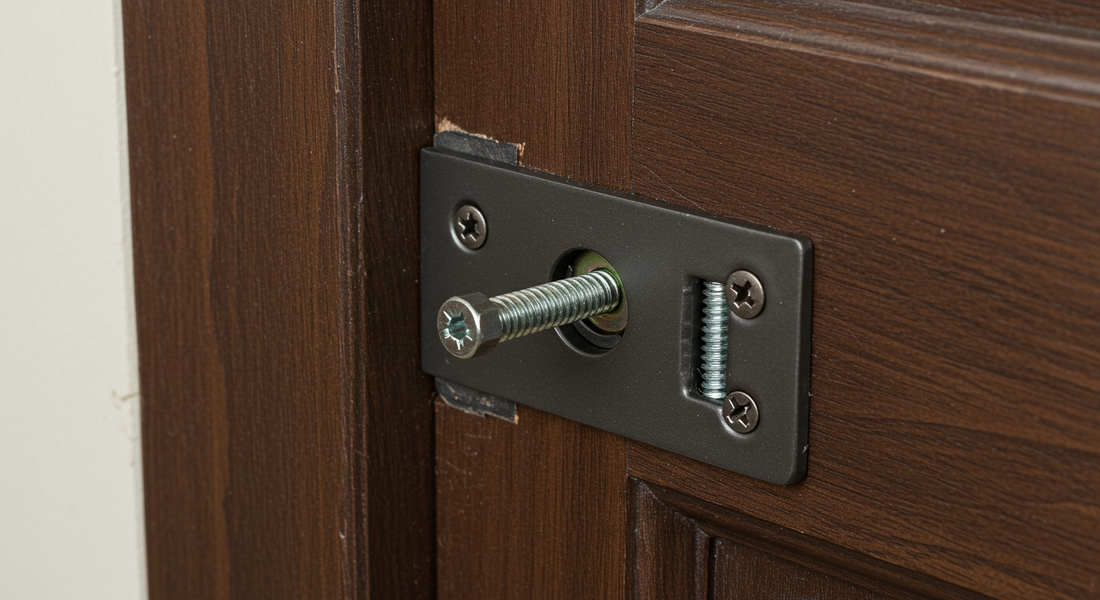
Home Security in a Crisis: 7 Practical Steps to Secure Your Home
Share
During a widespread emergency or crisis, the systems we rely on can become strained or unavailable. In these times, home security preparedness shifts from a matter of convenience to a critical component of your family's safety.
When first responders are overwhelmed, your home becomes your primary sanctuary. The goal of crisis home defense isn't to turn your house into an impenetrable fortress; it's about practical deterrence. You want to make your home a less appealing target than the next, encouraging potential threats to move on. These seven practical steps will show you how to secure your home effectively.
Step 1: Reinforce Your Entry Points
The weakest points of any home are the doors and windows. Hardening these targets is your first and most important line of defense.
-
Upgrade Locks and Strike Plates: Most standard door locks are installed with short screws that only bite into the soft wood of the door jamb. Replace these with 3-inch screws that anchor the strike plate directly into the sturdy wall stud behind it. This simple, cheap upgrade dramatically increases the force required to kick in a door. Consider adding a heavy-duty deadbolt as well.
-
Secure Sliding Doors and Windows: Sliding glass doors are notoriously vulnerable. A simple security bar or even a sturdy wooden dowel cut to fit in the track can prevent it from being forced open. For windows, ensure all locks are functional. You can also apply a security film that makes the glass shatter-resistant, preventing easy entry.

Step 2: Control Your Environment
A potential intruder's best friend is concealment. By controlling the environment around your home, you can take this advantage away.
-
Trim Landscaping: Overgrown bushes and trees near your house provide perfect hiding spots. Trim back all shrubbery from around windows and doors to maintain clear lines of sight. This is a crucial element of SHTF home security.
-
Exterior Motion-Activated Lighting: Darkness provides cover for illicit activities. Install bright, motion-activated solar lights around all entry points, corners of your house, and dark areas of your yard. A sudden flood of light is a powerful psychological deterrent that exposes an intruder and draws attention.
Step 3: Develop a Family Security Protocol
Your security plan is only as strong as your family's ability to execute it. Everyone needs to know what to do in case of an intrusion.
-
Communication Plan: Establish a clear, simple communication plan. This includes agreeing on a code word that signals a potential threat without causing panic. Everyone should know who to call and what information to provide.
-
Designate a "Safe Room": Choose a room in your house to be a designated safe room. Ideally, this room has a solid-core door, a deadbolt, and a window for escape if necessary. It should be stocked with a phone, a basic first-aid kit, and a personal safety alarm or another way to make noise.
Step 4: Non-Lethal Deterrents and Alarms
You don't need an expensive, monitored system to create an effective alarm. Simple, standalone devices can be incredibly effective.
-
Door/Window Alarms: Inexpensive, battery-powered contact sensor alarms can be placed on all accessible doors and windows. When the contact is broken, they emit a piercingly loud alarm that can startle and scare off an intruder.
-
Driveway Alerts: A driveway alarm that uses an infrared sensor will alert you whenever a person or vehicle enters your property, giving you valuable early warning.

Step 5: Fire Safety as a Security Measure
In a crisis, fire can be a significant threat, whether accidental or intentional.
-
Maintain Fire Extinguishers and Smoke Detectors: Ensure you have multiple, fully-charged ABC-rated fire extinguishers strategically placed throughout your home, especially in the kitchen and garage. Test your smoke detectors monthly and replace the batteries twice a year. Being able to control a small fire can prevent a catastrophic loss of your primary shelter.
Conclusion: The Layered Approach to Security
Effective home security preparedness is not about a single gadget or tactic; it's about creating layers of security. Each step, from trimming bushes to upgrading screws, adds another layer of difficulty and deterrence for a potential intruder. By implementing these practical measures, you create a safer environment for your family and gain the invaluable peace of mind that
